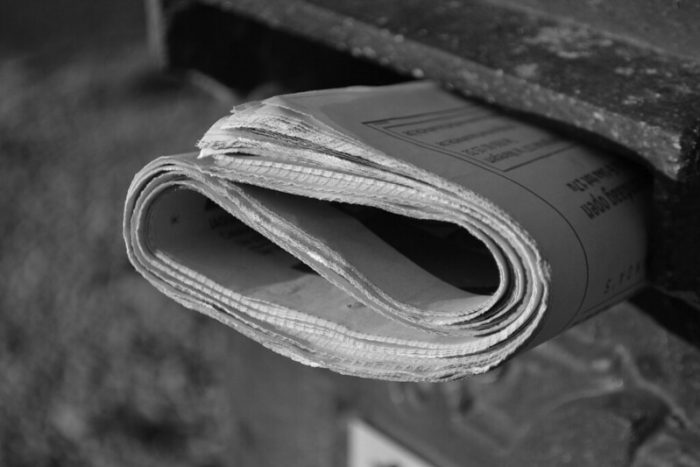
“We can no longer afford to be the paper of record,” Brian McGrory, the editor of The Boston Globe, said in a gathering of metro daily editors on Tuesday. “We need to be the paper of interest.”
He added: “There’s incredible competition for people’s time and their pocketbooks and their attention, and if the Globe is not interesting, searingly relevant, provocative on a day-to-day basis, we’re simply not going to survive as a news organization.”
The panel, “The Digital Transformation of The Metro Daily,” was hosted by the Harvard Kennedy School’s Shorenstein Center on Media, Politics, and Public Policy, and was moderated by Jennifer Preston, who’s a senior fellow at Shorenstein’s Technology and Social Change Project and was formerly VP for journalism at the Knight Foundation. Besides McGrory, panelists included Suki Dardarian, editor and SVP of The Minneapolis Star Tribune; Gabriel Escobar, editor and SVP of The Philadelphia Inquirer; Michele Matassa Flores, executive editor of The Seattle Times; and Mizell Stewart III, VP of news performance, talent and partnerships for Gannett and the USA TODAY Network.
Some interesting excerpts from the panel are below. You can watch the whole thing once it’s posted here.
It is something that our ownership has demanded and that we have gotten, and at this point, our digital subscribers can fund almost two of our newsrooms, which puts us in a really enviable spot in terms of our future sustainability and our ability to grow and attract ever more readers.
Our subscribers, increasingly — and our readers, even beyond our subscribers — are the ones that are holding us accountable for reaching all types of readers … It’s become very clear that our younger new subscribers are going to demand that we cover social justice movements, that we reach out to underrepresented communities, that we hold ourselves accountable for the work we do and the work we don’t do. So that is front of mind for us all the time….
We started an equity newsletter, which is a weekly newsletter aimed at highlighting work we do around equity and nderrepresented communities, social justice movements and the like. And that’s done a couple of things. It’s helped get that work out to a broader audience. It’s helped highlight to [communities] where we’ve had mistrust over the years — self-inflicted mistrust — that we are making an effort and making strides there. And it also holds us accountable, because if we have a week where we don’t have enough stuff for that newsletter, or where we’re scraping, that’s kind of a wake-up call. That may not be the biggest newsletter that we publish, but it’s a really important one.
The dirty little secret back then, which has only become more acute as the resources devoted to coverage have changed, is that we never quite followed all of those crime reports through to their conclusion. It wasn’t as big of a deal in the days when we had print: If you really wanted to find out about something that happened to somebody, you would go to the library and look through the microfiche or you would go to the courthouse and look up records.
Well, with Google everything gets crawled, everything gets tracked, everything gets memorialized. And we found [a lot] of people saying, “Hey, can you make this go away?” We’re talking two-bit crimes, minor offenses. In addition to that, looking at demographics and when you think about inequality in policing and where police resources have tended to be concentrated, [crime reporting] promotes inequity and promotes, in many cases, a false narrative of a community.
And so, as we began to talk to communities of color in Rochester around the issue of how might we regain your trust, this continued to come up as an issue, and a group of editors in our Atlantic region began to explore how we might change our approach. We’d started moving in this direction a few years earlier when we stopped running mugshot galleries, which were just plain plays for digital traffic. That really started a conversation that culminated in a public safety coverage statement, where we have worked with our newsrooms and trained our teams to move away from police blotters and to concentrate on nuanced coverage of public safety issues.
By eliminating coverage of these minor crimes, we’re able to focus on trends, we’re able to focus on larger issues … those larger issues that really have meaning to people in their lives. It doesn’t mean that that we ignore major crimes, but we move away from a lot of of minor offenses that really don’t have any larger impact on the community.
Maybe when coronavirus finally dies down, if ever, we’ll start a general interest news one. That’s one idea that we’re looking at. But it’s just been fascinating to watch what hooks readers now, and how we can use that to get and keep people. Our retention of all those new subscribers has been better than the rate that we had before the pandemic, which was a pleasant surprise.
How long? I don’t know. I would be shocked if we were still publishing seven days three or four years from now. [But] I think there’s real import to print. Minneapolis has done an excellent job with their Sunday newspaper. We look at that as a model for us and hope to do that in the next year or two.